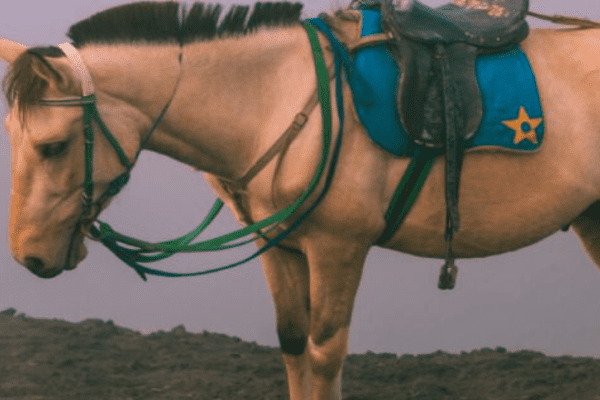The Java Pony (also renowned as Kumingan Ponies) hails from Java island in Indonesia. These majestic horses stand out among equine breeds by being especially sturdy and substantial in size – two characteristics which set them apart.
Light yet sturdy frames give these workers exceptional endurance and an incredible capacity for labor. This breed’s adaptability and resilience make it perfectly suited to Indonesia’s tropical climate, where it has become part of the local equestrian scene. Beyond physical prowess, the Java Pony stands as a living testament of Indonesia’s rich equestrian tradition – flourishing amid natural splendor and cultural vibrancy in a country famed for both.
History:
The Enigmatic Arrival
The story of the Java Pony’s origins is one of fascinating mystery. These horses, thought to have descended from Tibetan or Mongol breeds, made their debut on Java some unknown date or time in history; its exact date remains a matter of speculation and remains shrouded in mystery.
Chinese Connections: Tang Dynasty’s Gift
One compelling theory dates back to the 7th century and China’s Tang dynasty’s influence in that era. Equine from this epoch may have reached Indonesia via Dja-va in Kalingga kingdom, Dva-ha-la in Bali and Dva-pa-tan on Bali as diplomatic offerings for Dja-va (Kalingga kingdom), Dva-ha-la in Kuta and Dva-pa-tan in Bali (Bali). One thread of history suggests they might even have arrived via Java during this epoch.
Mongolian Footprints
The Mongol invasion of Java in 1293 adds further layers of intrigue to the Java Pony’s lineage. It has been speculated that Mongolian horses captured during this tumultuous invasion contributed to its genetic makeup, giving rise to its unique traits; hence this theory suggests a substantial part of its ancestry is owed to these rugged Mongolian horses.
Majapahit Era: A Tipping Point
The 14th century saw Java experience a profound transformation in horse breeding. Java became a leading supplier to China and soon earned itself a place on their esteemed list of providers. The Majapahit era is particularly notable; during this period the quantity and quality of Javanese horse breeds experienced unprecedented expansion.
Gilded Elegance of Javanese Nobility
Tome Pires’s account from 1513 CE vividly conveys his admiration of Javanese nobility’s splendor, with horses decorated with intricate designs and ornate ornaments roaming freely across their lush countryside landscape. Stirrups studded with glittering gold studdings set them apart as objects of unrivaled opulence; an unparalleled aesthetic spectacle unmatched anywhere else around the world.
The Sumbawa Connection
The rich tapestry of Java Pony history extends its branches all the way to Sumbawa Island. It is believed that when Javanese people from Majapahit Empire conquered Sumbawa during 14th century conquest, they brought with them a legacy of horse breeding which flourished under Bima and West Sumbawa sultans known for equine endeavors; creating a vibrant population of horses on Sumbawa island itself and giving rise to both Sumbawa (and Sandalwood) horses which share an interesting tie to Mongolian Horses as well.
The Enigma of Arabian Influence
Historic documents such as Dutch archives often refer to Arabian horses and Sumbawa ponies as having originated in Indonesia; however, no tangible evidence can support this claim in Indonesian horses and Sumbawa ponies. This adds another level of mystique to their rich histories.

Characteristics:
The Java Pony, a distinguished member of Southeast Asian ponies, occupies a distinct niche among equine breeds. As the largest native horse breed from Indonesia and renowned for limiting crossbreeding to preserve its distinct lineage.
Though seemingly diminutive in stature, this horse boasts an intriguing history as well as physical traits that set it apart in the equine world.
Physical Characteristics
The Java Pony exudes understated elegance while possessing distinctive traits. They are distinguished by their slim bodies and head which exudes simple charm; its long ears and expressive eyes add character.
Closer inspection reveals short yet muscular necks with prominent withers and gracefully sloping shoulders which culminate into broad chests demonstrating its inherent strength.
Notably, the Java Pony stands out with its distinctive characteristic–an elongated back paired with a slightly sloping rump–evidencing their Arabian heritage and lending their lineage an air of mystique.
Their legs with thin bones and unconventional joint development defy expectations by possessing remarkable strength; hardened hooves stand as testament to their resilience.
Size and Variability
Java Ponies come in all shapes and sizes, reflecting their diversity as a breed. According to DAD-IS database records, female Java Ponies typically reach an average height of 1.14 meters while 1.20 meters stands as the height average for males; CAB International suggests slightly taller average of 1.27 meters while some of the tallest Java Ponies recorded had reached 13.5 hands, equivalent to 57 inches or 145 centimeters.

